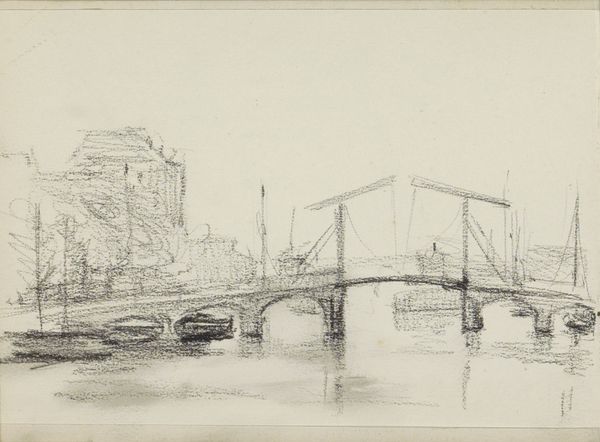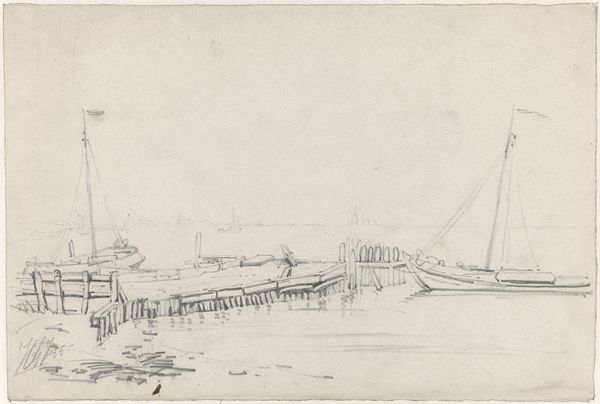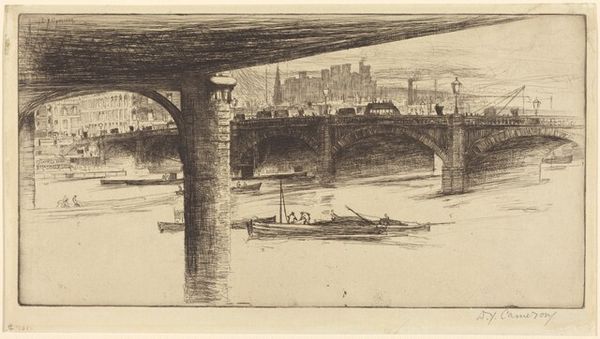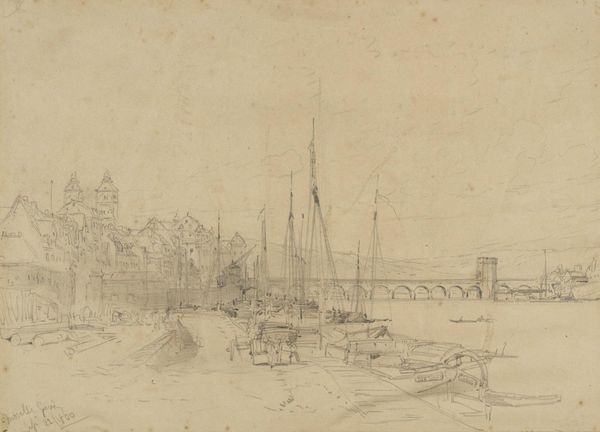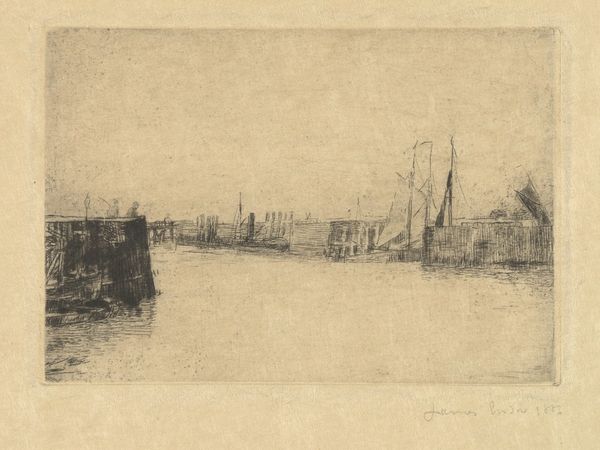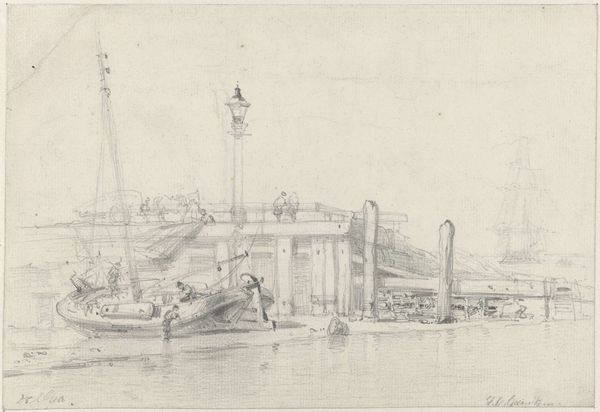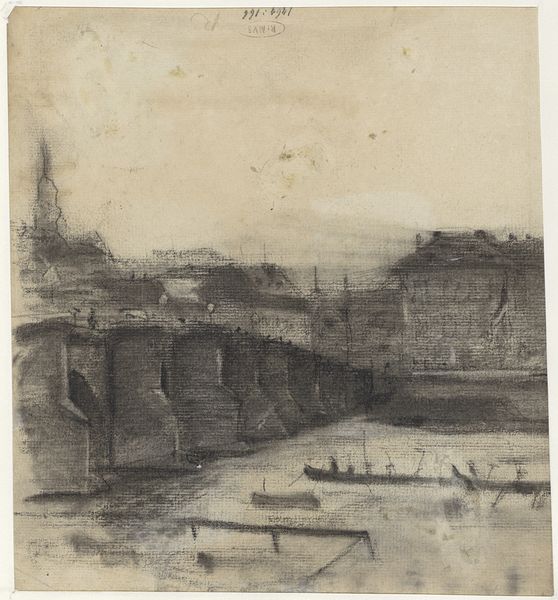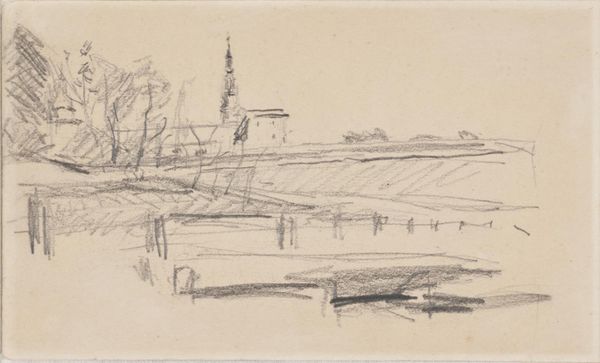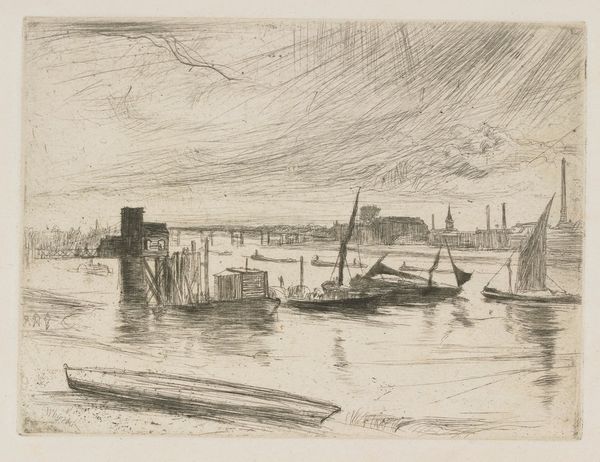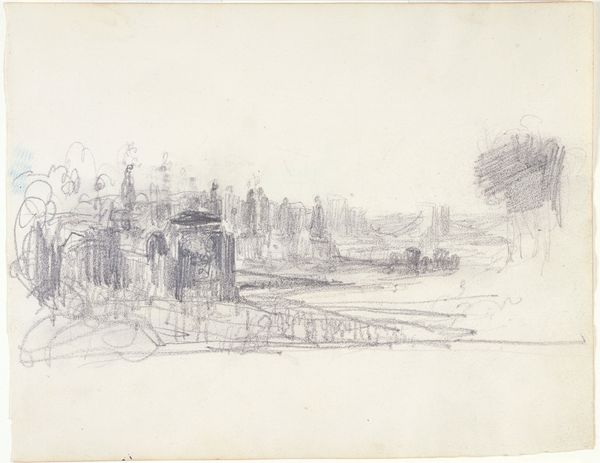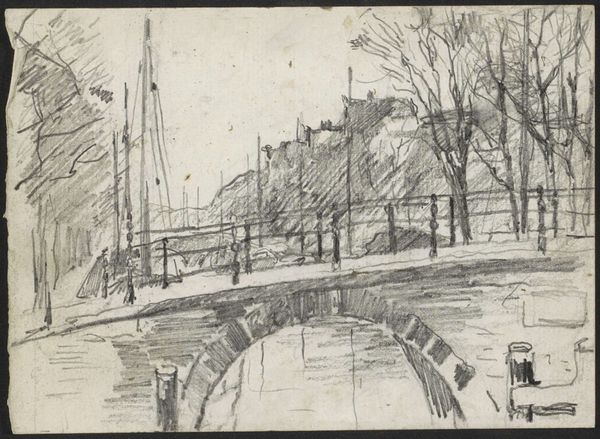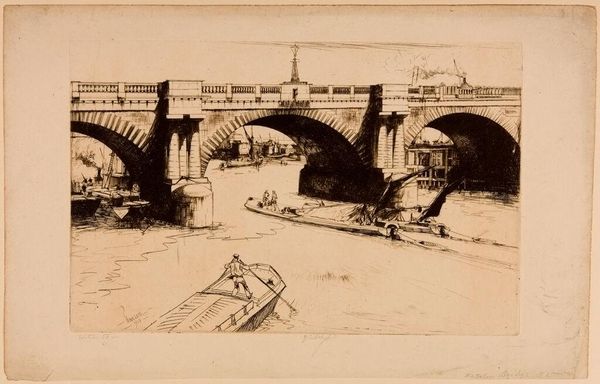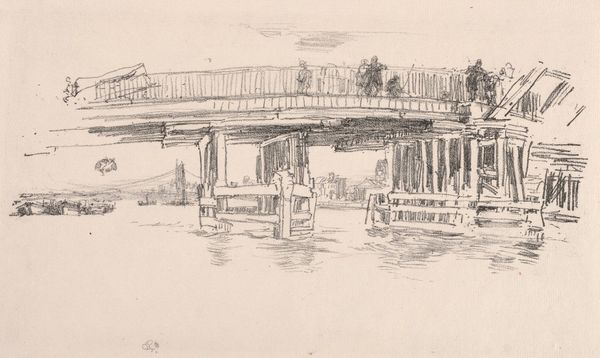
Copyright: Public Domain: Artvee
Editor: Here we have David Roberts’s pencil drawing, "From London Bridge," created in 1860. It’s a quick sketch, almost ephemeral, capturing the iconic bridge. What immediately strikes me is the contrast between the solid architecture and the fluid, almost ghostly reflections in the water. How do you interpret this work? Curator: It’s crucial to consider the sociopolitical climate of 1860s London. Roberts sketches the imposing architecture of empire, yet notice the lightness of his touch. The Industrial Revolution reshaped urban landscapes and intensified class divisions. This image seems to hint at those rapid changes. Are we celebrating progress or mourning a disappearing world? The ghostly reflections, as you noted, feel less about capturing optical truth and more about anxieties surrounding modernization. Editor: That's interesting. I hadn’t considered the anxieties. I was focusing more on the romantic, almost picturesque quality of the scene. Curator: But the picturesque has always been a way to contain and control nature and society, doesn’t it? London Bridge was a hub of commerce and transit. Think about who had access to the bridge, who benefited from the trade passing through it, and who was excluded. Roberts offers a visually pleasing scene, but it also subtly alludes to the growing inequalities of the era. Where does that leave the working class, or the colonized people whose labor fueled London's wealth? Editor: So, the sketch becomes more than just a pretty view, it opens a whole dialogue about power, labor, and the hidden costs of progress. Thanks, I would never have considered such angles by myself! Curator: Art serves as an excellent portal for questioning the narratives around us, past and present. It gives voice to diverse identities and acknowledges complicated histories, so never forget to consider this within your analysis.
Comments
No comments
Be the first to comment and join the conversation on the ultimate creative platform.
